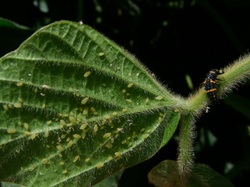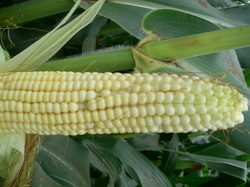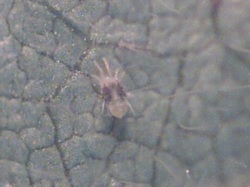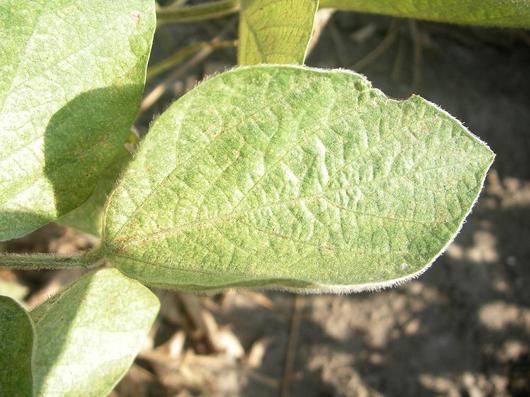
Today’s foray into soybean fields has shown that soybean aphid numbers are increasing. Today I was able to find several areas where numbers easily reached into the 500-1000’s per plant. In fact, some of these areas were already in the honey dew/sooty mold stage. Interestingly though, outside of these few areas, nothing else can be found; even in the same fields as these heavily infested areas.
Normally, I would have expected current aphid levels to have shown up about three weeks ago. And, normally, it would have taken a few weeks for them to progress to treatable levels. Does that mean about three weeks will be the optimum time to spray? I don’t know. For certain, our current weather is affecting their growth and spread. All we can do is keep watching. The attached photo is one of those hot spots not far from Wood Lake.
What about treatment thresholds? You all have heard that 250 aphids per plant over 80% of the field is the economic threshold. The actual threshold is 6000 aphid days – this means plants with one aphid per plant for 6000 days, or 2 aphids per plant for 3000 days, or 50 aphids per plant for 50 days or 250/plant for 24 days or 3000/plant for 2 days or 6000/plant for 1 day. You get the point. This is a very difficult threshold to monitor. The 250/plant threshold is used because it has been found that by the time they reach that level, the 6000 aphid day threshold has been (or soon will be) reached. This is important to know because low levels of aphids over an extended period of time can be damaging, especially when the plants are already under other stresses. Also, it is an economic threshold. Your tolerance for aphids is justifiably lower on $16 soybeans.
Normally, I would have expected current aphid levels to have shown up about three weeks ago. And, normally, it would have taken a few weeks for them to progress to treatable levels. Does that mean about three weeks will be the optimum time to spray? I don’t know. For certain, our current weather is affecting their growth and spread. All we can do is keep watching. The attached photo is one of those hot spots not far from Wood Lake.
What about treatment thresholds? You all have heard that 250 aphids per plant over 80% of the field is the economic threshold. The actual threshold is 6000 aphid days – this means plants with one aphid per plant for 6000 days, or 2 aphids per plant for 3000 days, or 50 aphids per plant for 50 days or 250/plant for 24 days or 3000/plant for 2 days or 6000/plant for 1 day. You get the point. This is a very difficult threshold to monitor. The 250/plant threshold is used because it has been found that by the time they reach that level, the 6000 aphid day threshold has been (or soon will be) reached. This is important to know because low levels of aphids over an extended period of time can be damaging, especially when the plants are already under other stresses. Also, it is an economic threshold. Your tolerance for aphids is justifiably lower on $16 soybeans.



 RSS Feed
RSS Feed
